Rules are made to be broken…
Maybe.
Or maybe not.
I follow two artforms – writing and embroidery. Both have a succinct set of rules.
I would be foolish to ignore the basic stepping stones for each artform because one wouldn’t get beyond first base.
BUT…
I sometimes feel the creative side, the side that exhibits emotion and tells a story, be it in thread or word, is sometimes lost in technical perfection.
I’ve read novels that tick every one of Writing 101’s boxes but they leave me cold with their lack of emotional and creative magnetism.
I’ve seen stunning embroidery that is as perfect as an embroiderer would want, but equally, there’s no creative spirit.
It’s why I love description in writing. Something frowned upon in this day and age. I love seeing something through a writer’s chosen words. Writers like Rosamunde Pilcher:
“Alone. She realized how much she had missed the luxury of solitude and knew that its occasional comfort would always be essential to her. The pleasure of being on one’s own was not so much spiritual as sensuous, like wearing silk, or swimming without a bathing suit, or walking along a totally empty beach with the sun on your back. One was restored by solitude. Refreshed.”
― Rosamunde Pilcher, Coming Home
And Dorothy Dunnett:
The Flanders galleys put into harbor every night in their highly paid voyage from Venice, fanned down the Adriatic by the thick summer airs, drifting into Corfu and Otranto, nosing into and out of Sicily and round the heel of Italy as far as Naples; blowing handsomely across the western gulf to Majorca, and then to the north African coast, and up and round Spain and Portugal, dropping off the small, lucrative loads which were not needed for Bruges; taking on board a little olive oil, some candied orange peel, some scented leather, a trifle of plate and a parrot, some sugar loaves.”
― Dorothy Dunnett, Niccolò Rising
(Oh my gosh! Is there any wonder I wrote a twelfth century fiction series on trade as a precursor to mercantile endeavour during the Renaissance?)
But to continue my thoughts – it might be a setting, an emotion, a character – to me it’s like a painter portraying a scene in bold brush strokes. It might be a watercolour wash, it might be tactile swathes of oils and acrylics – but it reeks of emotion and heart.
With embroidery, unless one is Tara Badcock, Margaret Light, Jenny Adin-Christie, or Annameike Mien (just some of my favourites), it’s a little harder to portray that essence, especially if one’s using a defined stitch.
(Tara Badcock)
(Annameike Mein)
(Jenny Adin-Christie)
(Margaret Light)
I always remember my close friend, world-renowned stumpworker, Jane Nicholas, saying to me one night over a glass of wine, that whilst technical proficiency is what we should all aim for (especially in analytical stumpwork), creativity is the lifeblood running through embroidery.
(One tiny sample of Jane’s spectacular work)
I added to what she said.
I replied that if there is no creativity, then there is no heart. It was a good chat we had that night and they were strong words. But my feeling is that sometimes, one has to step out of the bounds, go beyond the rules, beyond the norm. Lay a few words down, use the brush in an alternate way, take that stitch and develop it to create an eye-popping piece. With heart!
Some prefer to ‘master the art’. And fair enough, if that’s what they want. But my feeling is ‘Is it art if it’s just technical’? I suspect there are many different answers to that question and every person’s interpretation will be different because any form of artistic endeavour is subjectively viewed. For me though, I like tipping my embroidery upside down and thinking a little outside the formulaic box…
…which is probably why I’m finding doing my sample-book challenge
(which is defined and technical) so difficult.
And in respect of writing, I like descriptive passages in my own work. People consistently review my books as ‘words like silk thread’, so I am guessing that I might be striking some sort of right chord for readers.
Ultimately though, each technique goes toward creating a ‘picture that tells a story’ and you can pretty well guarantee when I do it, then rightly or wrongly I will have broken quite a few rules along the way.

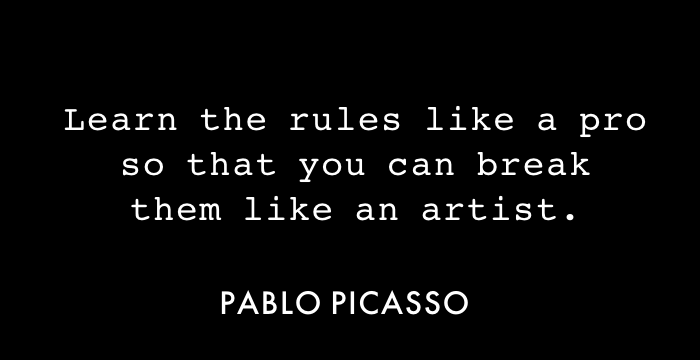
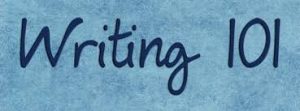
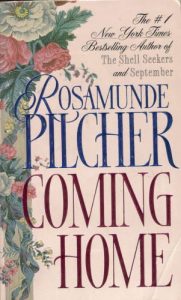
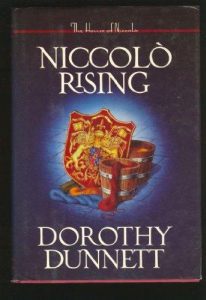
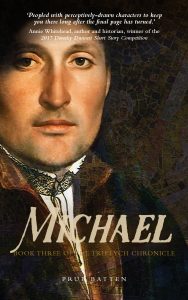
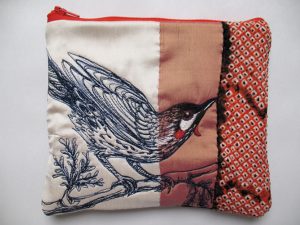


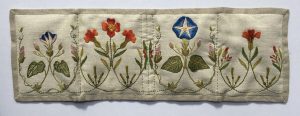
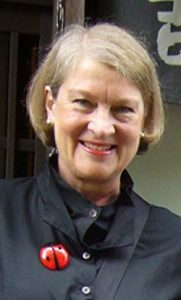
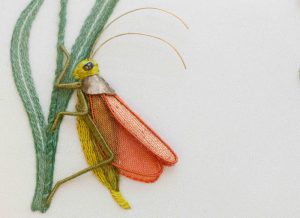

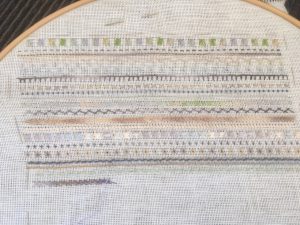
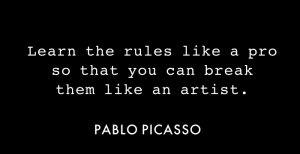
A very thought provoking post! I’m not an author, only an aspiring embroiderer. For me, I want to know the technical ‘right and wrong’, and perfect it as much as possible. But I also believe that ‘art’ is created when you bend those rules. When you stretch the definition of ‘right’. When you express yourself with technical know how, but a creative spirit.
Catherine, your embroidery has that fire and life I talk about.
The way we approach our interests is, as I mentioned, very subjective, and there will be many opinions I’m sure, of right and wrong.
My feeling is that there is no right and no wrong. For me, anyway. I love thread creating images, whether the stitches that make the images are right or wrong.
It’s honestly no different with word.